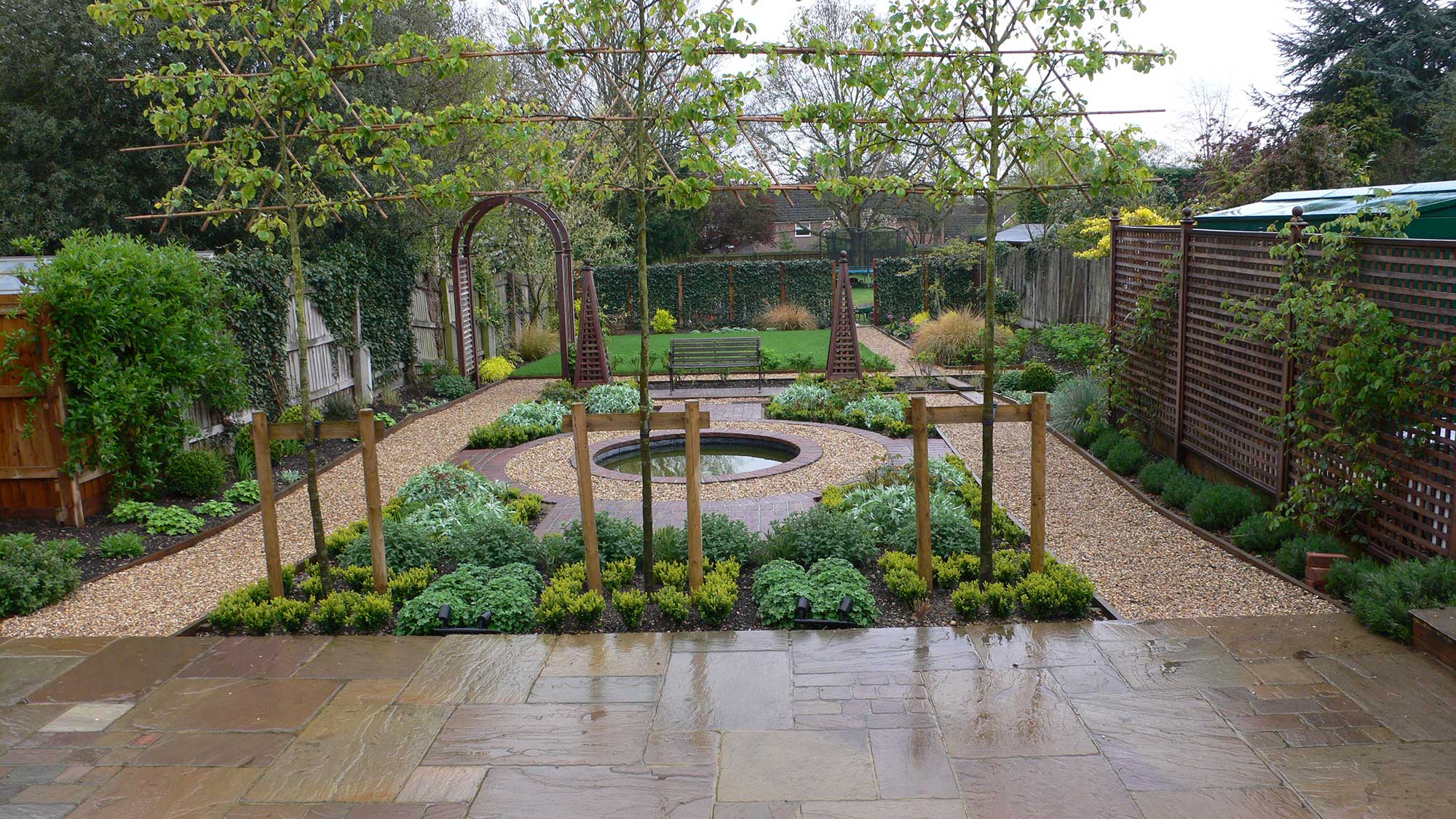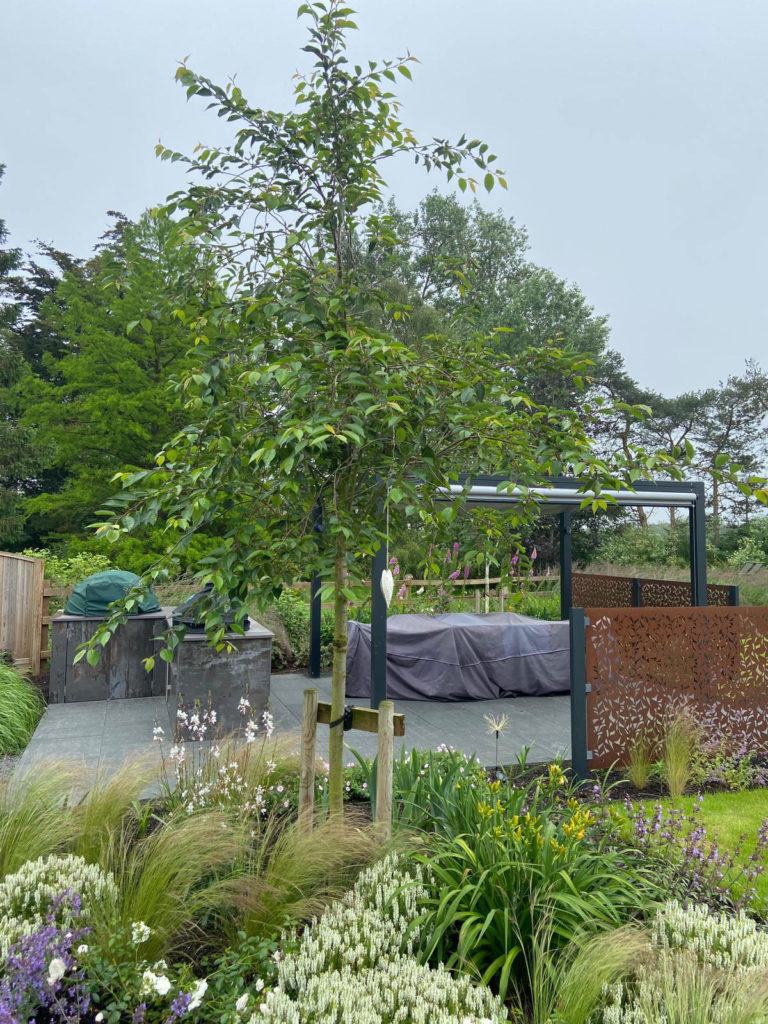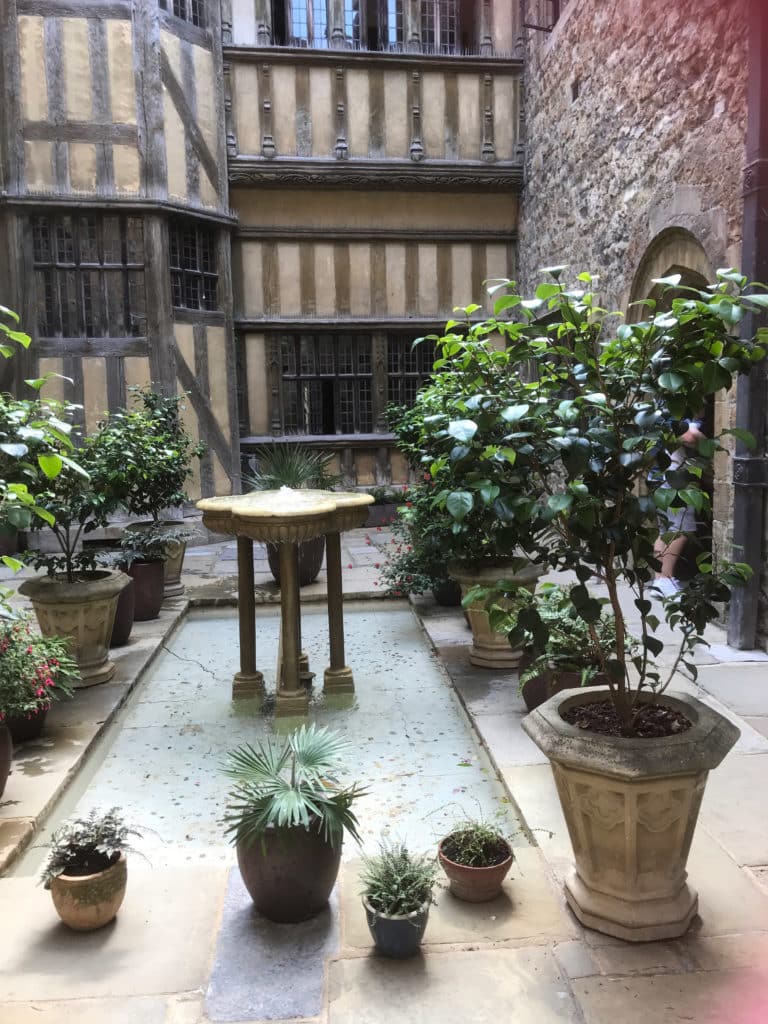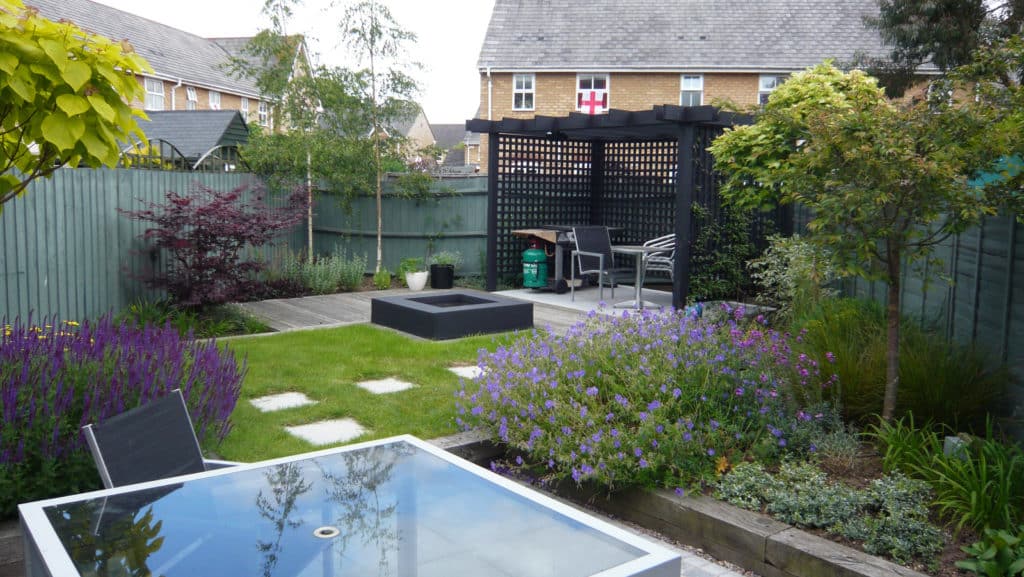09 Nov Choosing the right tree species
With bare root planting season upon us and a trillion good reasons why we should all be planting trees, our garden designers offer some advice on choosing the right tree species for your plot.
There are so many species of tree to choose from that it can be completely overwhelming to know where to even start. Whether you are a garden designer, landscaper or choosing for your own garden, answer these questions below to help you narrow down your options significantly:
Evergreen or deciduous
This is a simple step. Some of the best looking trees are deciduous and provide a spectacular display when in leaf or flower, but in the winter they may look unexciting. However, some trees can look stunning in the winter such as Betula utilis jacquemontii Grayswood Ghost which has a stunning white bark all year round.
Evergreen trees provide all year colour and are excellent for privacy. They work well as part of a mixed planting scheme and provide a good backdrop to show off more colourful planting but alone they may not have the ‘wow factor’ of a deciduous tree.
Colour
In this courtyard garden at Leeds Castle in Kent, tender citrus tree species are protected from frost while creating a wonderful ambience.
Which colour is down to personal choice and what works well within the surrounding environment. Colour does not just come from the leaf, the colour of the bark and the colour of the flower or berry all play an important role.
Sunny or shady
This is very important. If you plant a shade loving tree out in the open the sun will scorch the leaves. Whilst a sun loving tree planted in the shade won’t photosynthesise correctly and will struggle to grow.
Soil type acid or alkaline
All plants have a particular pH range in which they thrive, so it’s important when investing in a long-term purchase such as a tree to know what soil you have and select a suitable species.
You will need to test the soil in the area you propose to plant your tree. There are various methods to determine the type of soil you have. You can use a chemical testing kit or a soil metre to test the Ph level of your soil.
There are 6 types of soil these are:
- Clay
- Chalk
- Sandy
- Silt
- Peat
- Loam
Wet or dry ground (Soil moisture)
Again, this very important. The moisture conditions of your soil will determine whether you need to allow for a drought tolerant specimen or plant a moisture loving tree species.
What is the tree being used for?
The silver birch trees against the fence line in this property provide privacy and soften the view of neighbouring properties.
There are many uses for trees. Apart from their essential role within our environment, they can be used as a screen for privacy, a focal point, for colour and scent or to create shelter in an open space. These factors all play a role in which tree is suitable for you.
Weather exposure
You will need to consider the exposure to weather the tree will encounter. Many ornamental trees do not like being exposed to high winds for example. So you will need to research carefully which tree would be suitable for the site.
Choosing location
Location of your new tree within the garden is really important. A tree with a rigorous root system may compromise the foundations of your house or paving if planted too close. Or maybe block a view from a window with a tree with a low crown.
For even more information go to the RHS website
Let us help you with your tree selection. Contact us for a planting design or consultation








Sorry, the comment form is closed at this time.